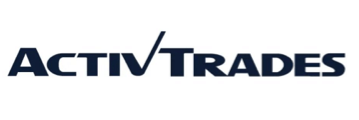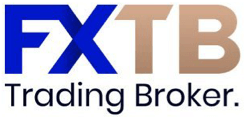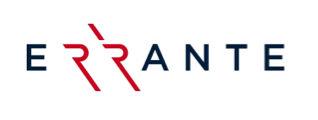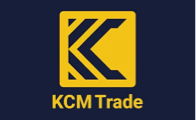Pepperstone is one of the most recognized forex and CFD brokers in the Asia-Pacific region, known for combining institutional-grade technology with transparent and cost-efficient trading conditions. Founded in Melbourne, Australia, in 2010, Pepperstone has grown into a global powerhouse with regulatory oversight from multiple authorities, including ASIC, DFSA, FCA, CySEC, and SCB. This strong regulatory foundation has made it a trusted choice among traders in Singapore, Malaysia, Thailand, Vietnam, and Japan who seek reliability, fast execution, and competitive pricing in an increasingly sophisticated trading landscape.
| Regulators | FCA ASIC BaFin DFSA CySec SCB CMA |
|---|---|
| Minimum Deposit | $200 |
| Leverage | Between 1:30 and 1:500 | Payment Methods | Visa Mastercard Bank Transfer Paypal Neteller Skrill POLi Bpay Unionpay Mpesa |
At its core, Pepperstone operates with an execution-only model that eliminates dealing-desk intervention. This ensures that every trade—whether a micro-lot or a high-frequency algorithmic order—is routed directly to top-tier liquidity providers for the best possible pricing. Asian traders, particularly those using expert advisors (EAs) and automated systems, benefit from Pepperstone’s low-latency infrastructure, with key servers strategically located in Tokyo and Singapore to reduce delays and enhance trading precision during volatile sessions.
The broker offers four leading trading platforms—MetaTrader 4, MetaTrader 5, cTrader, and TradingView—providing flexibility for traders of all styles, from manual day traders to quantitative developers. Each platform supports multi-asset trading across forex, indices, commodities, shares, and cryptocurrencies (where permitted). Combined with multilingual customer support, localized payment methods such as UnionPay and regional bank transfers, and swap-free account options for Muslim traders, Pepperstone delivers a globally compliant yet regionally tailored experience.
For Asian clients, Pepperstone’s appeal lies in its balance between regulation, technology, and accessibility. Whether trading the USD/JPY during the Tokyo session, hedging with gold CFDs, or building automated strategies on cTrader, clients can expect consistent execution, transparent spreads, and a professional trading environment built for serious performance. In 2025, Pepperstone remains a benchmark for trust, speed, and precision in Asia’s rapidly evolving trading ecosystem.
Regulation
When evaluating a broker in Asia, safety and regulation are central to any decision-making process. Pepperstone’s multi-jurisdictional regulatory network reflects a long-term commitment to transparency and investor protection. For Asian clients, this is particularly important, as regional regulations vary widely from strict frameworks (such as Singapore’s MAS and Japan’s FSA) to emerging environments with more flexible oversight. Below is an overview of Pepperstone’s main regulatory entities:
- ASIC (Australian Securities and Investments Commission): The original regulator of Pepperstone. ASIC supervision ensures strict capital adequacy, segregation of client funds, and regular reporting. This license has become a hallmark of credibility for traders in Asia-Pacific.
- FCA (Financial Conduct Authority, UK): Supervises Pepperstone’s European operations. While this is not an Asian regulator, its standards influence global compliance and data protection practices, indirectly benefiting Asian clients.
- DFSA (Dubai Financial Services Authority): This license allows Pepperstone to cater to the Middle East and nearby Asian markets, especially clients in the Gulf and South Asia. DFSA oversight ensures adherence to regional AML, CFT, and client protection norms.
- CySEC (Cyprus Securities and Exchange Commission): Oversees Pepperstone EU operations. Though European, its passporting structure influences risk frameworks applied globally, including for offshore Asian clients.
- SCB (Securities Commission of the Bahamas): Provides flexibility in leverage and product offerings, catering to professional or high-risk-tolerance traders in Asia seeking higher leverage ratios (up to 1:500).
- CMA (Capital Markets Authority, Kenya): Expands Pepperstone’s regulatory footprint into Africa, adding diversity and operational resilience for global clients.
These multiple licenses are more than a checklist. They allow Pepperstone to tailor its offering to each trader’s region of residence and legal requirements. For Asian clients, this translates into choice: those in Singapore or Australia may fall under ASIC or MAS-linked entities, enjoying high investor protection, while traders in Southeast Asia or India may opt for the SCB-regulated arm to access higher leverage and broader product lists.
All client funds are held in segregated accounts at Tier-1 banks, separate from operational capital. This is a fundamental safeguard against insolvency risks. In addition, under top-tier entities, negative balance protection ensures that traders cannot lose more than their deposits—a vital feature during volatile events such as flash crashes or black swan movements.
Openning an account — Our Experience
The onboarding process is streamlined and digital. Our test flow began with region detection, entity assignment, and selection of account type (Standard vs. Razor/Raw). Identity verification (KYC) required a government document and, in some cases, proof of address. The application guided us through trading-experience questions and a suitability/appropriateness check, common under major regulators. Verification timelines may vary by region and documentation quality, but in our case, approval was achieved within a business day.
Funding options populate based on residency—bank transfer and cards were universally available in our test, while local e-wallets and instant payment rails appeared selectively. Deposits reflected promptly by card and e-wallet; bank transfers took the usual 1–3 business days depending on corridor. We appreciated that the broker does not typically charge its own deposit/withdrawal fees (although banking and third-party costs can still apply). The client portal is intuitive: you can create additional sub-accounts in different base currencies, switch between platforms, and download platform terminals. Opening a demo account was instantaneous and mirrored the live environment closely for pricing and execution feel.
Account Types
Pepperstone offers a streamlined yet powerful selection of account types designed to meet the needs of both beginner and professional traders across Asia. Rather than overwhelming users with dozens of variations, the broker focuses on two core live accounts — the Standard Account and the Razor Account — supported by Swap-Free (Islamic) and Demo options. Each account type is optimized for different trading goals, risk appetites, and strategy frameworks commonly used by Asian traders, from intraday scalping to long-term position management.
Standard Account
The Standard Account is built for traders who value simplicity and transparent, all-inclusive pricing. It features spread-only trading, meaning all costs are embedded in the spread without additional commissions. This structure is ideal for beginners and swing traders who open fewer positions and prefer predictable transaction costs. Spreads typically start from around 0.8 pips on major currency pairs such as EUR/USD and USD/JPY. The account supports all platforms — MetaTrader 4, MetaTrader 5, cTrader, and TradingView — and offers access to the full range of instruments including forex, commodities, indices, shares, and crypto CFDs (depending on regulation).
For Asian traders in countries like Singapore, Malaysia, and Thailand, the Standard Account provides a low-barrier entry into Pepperstone’s ecosystem. Funding and withdrawals are available through regional payment methods, including UnionPay and local bank transfers, ensuring convenience and speed. The absence of commissions allows traders to focus on execution and market learning rather than cost optimization, making this the go-to account for education and steady strategy building.
Razor Account
The Razor Account represents Pepperstone’s flagship offering for experienced traders and professionals. It provides raw interbank spreads starting from 0.0 pips, combined with a small, transparent commission per trade (typically USD 3.5 per side per lot). This model is highly favored among Asian scalpers, algorithmic traders, and high-frequency users who prioritize execution precision and minimal cost slippage. During our tests through Singapore servers, average spreads on EUR/USD and USD/JPY were consistently among the tightest in the region.
Asian traders running Expert Advisors (EAs) on MetaTrader or algorithmic systems on cTrader benefit from Pepperstone’s low-latency infrastructure located in Tokyo and Singapore. This proximity significantly reduces delay between order submission and market execution — a crucial edge for news trading, scalping, and automated strategies. The Razor Account’s structure ensures that total trading costs remain competitive even for large daily volumes, making it the preferred account type for professionals who demand institutional-grade execution.
Swap-Free (Islamic) Account
Recognizing the importance of religious compliance in several Asian markets, Pepperstone offers a Swap-Free Account designed for Muslim traders who adhere to Sharia principles. This account type removes overnight interest charges (swaps) on eligible instruments, replacing them with transparent administrative fees when applicable. Traders in Indonesia, Malaysia, and Brunei can access the same platforms, pricing, and instruments as other account holders, without compromising faith-based financial practices. The account retains Pepperstone’s hallmark features: fast execution, segregated funds, and institutional-grade liquidity.
Demo Account
For new or developing traders, Pepperstone provides a fully functional Demo Account that mirrors live trading conditions. This environment is especially useful for testing strategies under real-time market conditions in the Asian timezone, where liquidity dynamics can differ from Europe or the U.S. Demos allow unlimited practice across all platforms, helping traders refine entries, exits, and algorithmic strategies before committing capital. Execution speed, chart data, and spreads are identical to live environments, providing an authentic simulation for both beginners and professionals fine-tuning performance.
Key Account Comparison
| Feature | Standard Account | Razor Account |
|---|---|---|
| Pricing Model | Spread-only (no commission) | Raw spreads + commission |
| Typical Spread (EUR/USD) | From 0.8 pips | From 0.0 pips |
| Commission | None | USD 3.5 per side per lot |
| Minimum Deposit | No fixed minimum (recommended USD 200) | No fixed minimum (recommended USD 200) |
| Leverage | Up to 1:500 (entity-dependent) | Up to 1:500 (entity-dependent) |
| Base Currencies | USD, SGD, JPY, AUD, EUR | USD, SGD, JPY, AUD, EUR |
| Platforms Supported | MT4, MT5, cTrader, TradingView | MT4, MT5, cTrader, TradingView |
| Hedging & Scalping | Allowed | Allowed |
| Swap-Free Option | Available | Available |
| Best For | Beginners, casual traders, swing traders | Scalpers, algorithmic, and high-volume traders |
Choosing the Right Account for You
For traders in Asia, the decision between Standard and Razor depends on strategy and trading frequency. If you’re learning, trading part-time, or prefer a simpler cost model, the Standard Account offers clarity and flexibility. However, if you trade during high-volume sessions like the Tokyo or Singapore open, run automated systems, or execute multiple daily trades, the Razor Account delivers measurable savings and execution precision over time.
Meanwhile, Muslim traders in Indonesia or Malaysia can opt for the Swap-Free Account to ensure compliance without sacrificing market performance. And for all newcomers, the Demo Account remains a safe environment to explore Pepperstone’s platforms before entering live markets. Whichever account type you choose, the broker’s consistent execution quality, deep liquidity, and localized service make Pepperstone one of the most trusted choices in Asia’s trading ecosystem.
Platforms
Pepperstone offers a robust multi-platform ecosystem designed to meet the technical and strategic diversity of Asia’s trading community. Rather than locking traders into a proprietary system, the broker integrates four of the industry’s most advanced platforms — MetaTrader 4, MetaTrader 5, cTrader, and TradingView — each tailored to distinct workflows and experience levels. This flexibility allows traders across Singapore, Malaysia, Thailand, and Japan to operate within their preferred environment, whether they rely on automated Expert Advisors (EAs), manual chart-based analysis, or social and community-driven insights. The combination of these platforms ensures that both institutional-grade and retail users can access deep liquidity and consistent execution under a unified infrastructure.
Execution performance is enhanced by Pepperstone’s data centers strategically located in Tokyo and Singapore, minimizing latency for clients trading during Asian market hours. Each platform supports multi-asset access — from forex and indices to commodities, shares, and crypto CFDs — with synchronized web, desktop, and mobile interfaces. Advanced charting, integrated analytics, one-click order entry, and algorithmic capabilities are standard across the suite, ensuring that traders can react instantly to price movements. For algorithmic developers, cTrader Automate and MetaTrader’s MQL environments offer rich programming flexibility, while TradingView provides a visually intuitive experience favored by discretionary traders. Together, these platforms form the technological backbone of Pepperstone’s commitment to precision, transparency, and user empowerment in Asia’s fast-paced trading landscape.
- MT4: The industry’s classic for FX, popular for its vast EA ecosystem. Strengths include custom indicators, strategy backtesting (single-threaded), and brokers’ rich third-party tooling.
- MT5: A more modern architecture than MT4 with additional timeframes, asset coverage beyond FX, a multi-threaded tester, and an enhanced programming language (MQL5) for faster, more robust algorithms.
- cTrader: Favored by many for its clean UI, advanced depth-of-market (DoM), fast order entry, and native cAlgo/cTrader Automate for algorithmic trading. cTrader Copy opens social-copy possibilities while retaining granular control.
- TradingView: A web-first, chart-centric environment renowned for its drawing tools, Pine Script, and community indicators. Pepperstone integration allows placing trades directly from TradingView charts where supported.
Across platforms, Pepperstone supports essential order types (market, limit, stop, stop-limit where available), and risk tools like stop loss and take profit. Partial fills can occur on large orders, reflecting genuine market microstructure. Latency is low under normal conditions, and we found slippage to be symmetrical around news—positive or negative—depending on liquidity conditions. Mobile apps (MT4/5, cTrader, and TradingView web mobile) keep the experience consistent on the move, though each has its own learning curve. API-minded traders typically gravitate to cTrader or MT5 for a smoother development experience, but Power users still do well on MT4 with the depth of third-party libraries.
Assets
Pepperstone provides access to a wide variety of instruments, all offered as CFDs (Contracts for Difference). This allows traders to speculate on price movements without owning the underlying assets while using leverage appropriate to their jurisdiction. The product range includes:
Available Assets
Below you can see which assets are available for trading with Pepperstone:
| Asset | Availability |
|---|---|
| Currencies | 72 |
| Real Stocks | ✗ |
| Stock CFDs | ✓ |
| Commodities | ✓ |
| Indices | ✓ |
| Real ETFs | ✗ |
| ETFs CFDs | ✓ |
| Futures | ✗ |
| Options | ✗ |
| Bonds | ✗ |
| Cryptocurrency CFDs | ✓ |
| Real Cryptocurrencies | ✗ |
*Availability of certain assets may vary based on account type, platform, or region.
Pepperstone delivers a comprehensive multi-asset environment that allows Asian traders to access global markets from a single, technology-driven account. Its product lineup includes forex, indices, commodities, shares, ETFs, and cryptocurrencies (subject to local regulation), offering a level of diversity that suits both retail and professional investors. The forex segment remains the broker’s foundation, providing deep liquidity and tight spreads across major, minor, and regional pairs such as USD/JPY, USD/SGD, AUD/JPY, and NZD/USD. For traders active during the Tokyo and Singapore sessions, these pairs provide strong execution consistency and low latency thanks to Pepperstone’s regional servers and direct market access infrastructure.
Beyond forex, the broker’s index CFDs cover key regional and global benchmarks, enabling traders to capture opportunities across different time zones. The Nikkei 225, Hang Seng, and ASX 200 dominate morning trading flows, while U.S. indices like the S&P 500 and Nasdaq 100 offer high liquidity through the Asian night. These instruments are popular among discretionary and algorithmic traders alike for their predictable volatility and transparent contract specifications, which are visible directly within each platform. Margin requirements, tick sizes, and trading hours are clearly outlined, simplifying cross-market strategy execution.
Commodity trading at Pepperstone focuses on precious metals and energy, long considered staples for Asian portfolios. Gold, silver, and crude oil attract consistent participation as instruments for hedging and macro speculation. Gold pairs like XAU/USD and XAU/SGD are particularly favored in Southeast Asia, where traders combine long-term defensive positions with short-term tactical trades. Transparent rollover rates and financing details ensure clarity for those holding positions across multiple sessions, a common approach among swing traders in the region. Energy instruments such as Brent and WTI add further breadth, allowing exposure to global demand and inflation cycles within the same account.
In equities, Pepperstone offers CFD access to leading U.S., UK, and Australian stocks, complemented by ETFs for diversified exposure to sectors such as technology, energy, and finance. This setup enables traders to express macro or thematic views — for instance, using U.S. tech stocks to track global innovation or commodity-linked shares to hedge against inflation. Corporate events like dividends and splits are handled via cash adjustments that maintain transparency and predictable P&L effects. Cryptocurrency CFDs extend this multi-asset reach, giving advanced traders exposure to digital volatility within a regulated trading environment that mirrors FX and index execution standards.
For Asian clients, the true value of Pepperstone’s asset range lies in its integration with regional liquidity and trading behavior. Whether executing early-morning JPY crosses, midday Hang Seng rotations, or evening Nasdaq momentum trades, the broker’s infrastructure and margin aggregation allow smooth transitions between markets without operational friction. Combined with consistent pricing, institutional liquidity, and synchronized execution across platforms like MT4, MT5, cTrader, and TradingView, Pepperstone’s asset offering represents a cohesive ecosystem built for precision and versatility across the Asia-Pacific trading landscape.
Spreads
Pepperstone’s hallmark is its Razor/Raw pricing: access to interbank-style spreads with a commission per side. On major currency pairs, recorded minimums can hit 0.0 pips at liquid times, though averages are naturally above zero. The Standard account bakes costs into the spread, useful for simplicity or for investors whose strategies incur fewer tickets per day.
Spreads Offered
Below a visual representation of Pepperstone's spreads across several currency pairs:
*Spreads are variable and may change based on market conditions, account types and trading volumes.
Pepperstone’s spread architecture is built around aggregated liquidity from Tier-1 banks and non-bank providers, streamed to clients with minimal internal mark-ups on its Razor structure and a transparent spread-only presentation on its Standard profile. For Asia-based traders, this matters most during the Tokyo open and the Asia–London overlap, when the depth in USD/JPY, EUR/USD, and major JPY crosses typically tightens and execution quality becomes most visible. On Razor, minimums can reach 0.0 pips at peak liquidity, while the Standard account wraps costs into a slightly wider variable spread that favors low-frequency workflows. In practice, what defines competitiveness is not the absolute minimum but the stability of the average during your active hours; Pepperstone’s multi-venue feed aims to smooth transient gaps so that the median fill across a session remains consistent.
Session microstructure drives the profile of spreads more than any single broker feature. In the early Tokyo window, USD/JPY and cross-JPY pairs often display their best behavior for scalping systems given local market-making activity and news cadence. As Singapore and Hong Kong liquidity joins, spreads in USD/SGD, AUD/JPY, and CNH-sensitive proxies can normalize from their pre-open levels, before re-compressing further when London flows come online. Conversely, Asia-afternoon conditions may see spreads expand modestly on instruments that rely heavily on European and U.S. liquidity, something discretionary traders can mitigate by adjusting ticket size or waiting for tighter depth once London is active. Pepperstone’s infrastructure in Tokyo and Singapore helps reduce the latency component of all-in cost, so that the spread you see is more closely aligned with the price you receive.
Understanding “all-in cost” is crucial. On Razor, you combine the displayed bid-ask with a fixed commission per side per standard lot; on Standard, you consider only the variable spread. A high-turnover EA or cTrader Automate strategy typically benefits from Razor because the tighter quoted spread plus commission yields a lower round-trip than a spread-only schedule, especially on liquid pairs like USD/JPY during Asia–London overlaps. Swing traders, or those who open fewer tickets with wider targets, may find Standard economically equivalent once you amortize costs across holding periods. Either way, the correct comparison is not headline minimums but your own strategy’s average ticket economics, measured over dozens of trades in the hours you actually operate.
Spread behavior outside FX follows similar principles but reflects each market’s liquidity clock. Major index CFDs such as Nikkei 225 and Hang Seng compress when their underlying cash sessions are live and broaden during off-hours or into key data releases. Metals like XAU/USD often tighten when Tokyo bullion flows and early London activity overlap, then widen around high-impact macro prints. Energy instruments, particularly Brent and WTI, exhibit their most competitive spreads closer to European and U.S. pit hours; Asia-morning participation is adequate for tactical entries but can carry slightly higher variable costs. Pepperstone streams these contracts with exchange-aligned trading hours and symbol-level specifications in the platform, enabling precise planning for when your strategy expects tightness versus drift.
Other Trading Costs
Beyond spreads and commissions, understanding additional trading costs is essential for evaluating real performance — especially for traders in Asia who operate across multiple sessions and asset classes. Pepperstone maintains a transparent cost structure that minimizes hidden fees while clearly outlining all potential charges related to funding, financing, and currency conversion. These secondary costs are often overlooked by newer traders, but they play a crucial role in determining overall profitability, particularly for strategies that hold positions overnight or operate in different base currencies. By offering competitive financing terms and avoiding unnecessary administrative charges, Pepperstone ensures that Asian traders can focus on market execution without worrying about unpredictable deductions.
Below are the key non-trading and additional costs that traders in the Asia-Pacific region should consider when evaluating Pepperstone’s total trading environment:
- Overnight Financing (Swaps): Positions held past the market rollover are credited or debited based on the interest rate differential of each currency pair or asset. Swap-free (Islamic) options are available for traders in Indonesia and Malaysia.
- Currency Conversion Fees: If your account base currency differs from the traded instrument — for example, using SGD or JPY while trading USD pairs — minor conversion charges may apply upon closing or withdrawing profits.
- Deposit and Withdrawal Fees: Pepperstone does not charge broker-side transaction fees, though regional banks, UnionPay, and e-wallets may impose corridor-specific costs depending on the payment method.
- Inactivity Fees: The broker does not impose inactivity or maintenance charges, allowing traders to pause operations without penalty — an advantage for part-time or seasonal traders in Asia.
- Data or Exchange Fees: For share and ETF CFDs, small exchange-related costs can apply in certain markets, though they are fully disclosed before trading.
- VPS and Connectivity Costs: Optional for high-frequency and algorithmic traders, VPS hosting near Tokyo or Singapore helps maintain ultra-low latency and uninterrupted connection but incurs external provider costs.
- Slippage and Market Impact: Not a fee per se, but a cost of execution that can occur during volatile events. Pepperstone’s NDD model allows both positive and negative slippage depending on liquidity conditions.
Overall, Pepperstone’s approach to additional trading costs is both fair and predictable, aligning with the expectations of Asia’s growing base of professional traders. By avoiding hidden charges and providing clear disclosure of financing and conversion terms, the broker builds a foundation of trust that supports long-term trading consistency. Combined with efficient local funding options and region-specific transparency, these policies make Pepperstone one of the most cost-effective and transparent brokers for traders across Singapore, Malaysia, Thailand, and the broader Asia-Pacific region.
Trading Conditions
Pepperstone’s trading conditions are designed to meet the precision and speed required by Asia’s fast-moving markets. The broker operates under a pure execution-only and no-dealing-desk (NDD) model, ensuring that every order is routed directly to liquidity providers without dealer intervention or price manipulation. This structure appeals strongly to traders in Singapore, Malaysia, Thailand, and Japan, where transparency, latency, and order consistency are essential. With data centers in Tokyo and Singapore, execution speeds often fall below 30 milliseconds, creating a competitive edge for scalpers, algorithmic systems, and high-frequency traders who rely on real-time market access.
In addition to execution quality, Pepperstone supports trading freedom — allowing hedging, scalping, and the use of automated systems across all its platforms. Traders also benefit from flexible leverage frameworks that align with regional regulatory standards, ensuring a balanced mix of opportunity and protection. For professionals operating under higher-leverage entities, such as the SCB-regulated arm, the broker combines flexibility with full disclosure of margin requirements and risk policies. This consistency across regions provides Asian clients with a reliable, efficient, and transparent trading environment that supports both short-term tactics and long-term strategies.
Key aspects of Pepperstone’s trading conditions include:
- Execution Model: Straight-through processing (STP) with no dealing desk, ensuring direct access to institutional liquidity.
- Latency: Average execution speed below 30 milliseconds through Singapore and Tokyo servers, supported by global redundancy.
- Leverage: Up to 1:500 under the SCB entity; 1:30 for retail clients under ASIC or DFSA. Professional accounts may qualify for higher limits.
- Order Types: Market, limit, stop, trailing stop, and OCO orders available across all trading platforms.
- Hedging and Scalping: Fully permitted on all accounts, catering to professional and algorithmic trading styles common in Asia.
- Negative Balance Protection: Available under regulated entities to protect retail clients from extreme market volatility.
- Islamic Accounts: Swap-free options provided for traders in Indonesia, Malaysia, and other Muslim-majority regions.
- Automation and VPS: Dedicated servers and VPS options in Tokyo and Singapore for low-latency algorithmic execution.
- Risk Tools: Stop loss, take profit, and guaranteed stop-loss orders (where supported) to manage exposure on JPY, SGD, and regional pairs.
Together, these conditions create a trading framework that balances performance with safety. Execution is fast, cost structures are transparent, and risk management tools are integrated across all platforms. For Asian traders, this means the ability to operate confidently during high-volatility sessions — from the Tokyo open to the Asia–London overlap — without worrying about slippage, delayed orders, or inconsistent pricing. Pepperstone’s infrastructure and policies demonstrate a deep understanding of how regional traders operate, offering a seamless blend of speed, flexibility, and regulatory integrity that supports every trading style in the Asia-Pacific market.
Is Pepperstone a good option for Asian traders?
For traders in Asia, Pepperstone is a compelling candidate for several reasons. First, the platform choice is exceptional: MT4/MT5 for EA users, cTrader for depth-of-market and API friendliness, and TradingView for chart-centric discretionary trading. Second, server locations and low-latency routing matter for active strategies; Pepperstone’s infrastructure is built with this in mind, which benefits Asia-Pacific users who prioritize execution speed for scalping or news trading (subject to each strategy’s compliance with the broker’s terms).
Third, regional funding options are reasonably broad, and base-currency selection for sub-accounts reduces conversion friction when trading USD-quoted instruments. Fourth, the broker’s multi-entity structure allows many Asian clients to onboard under well-regulated jurisdictions (e.g., Australia or the EU/UK entities where eligible) or other affiliated entities that permit a wider product set or higher leverage—always with the caveat that protections differ. Finally, education and research in English are strong; traders who prefer localized languages should confirm availability, but the core platform communities (especially TradingView and MT5) are inherently global and resource-rich.
Potential drawbacks for Asian traders include timezone alignment for support in specific languages, occasional funding corridors that are slower in certain countries, and the universal caveat of wider spreads/volatility around Asia-morning macro releases. None of these are unique to Pepperstone, but they’re practical considerations when choosing any global broker.
Our veredict.
Pepperstone represents the modern ideal of a broker tailored for Asia’s dynamic financial landscape. It combines regulatory strength with operational agility, technological innovation with cost discipline, and regional understanding with global execution standards. The broker’s presence in multiple regulatory environments ensures that Asian clients can trade under frameworks that suit their risk tolerance and leverage preferences.
In performance terms, execution speed, platform choice, and pricing competitiveness place Pepperstone among the top brokers in Asia-Pacific. Its infrastructure in Singapore and Tokyo underscores a commitment to latency-sensitive strategies, while its transparency in costs and client fund protection inspires trust. Though the broker could expand its offering of Asian local equities or ETF CFDs to further appeal to regional investors, the existing portfolio is more than sufficient for serious FX and CFD professionals.
In summary, Pepperstone remains a top-tier choice for Asian traders who value professionalism, efficiency, and technological precision over marketing flair. Its regulatory diversity, local accessibility, and robust support network make it one of the safest and most sophisticated environments for trading in 2025.
Frecuently Asked Questions
Is Pepperstone regulated in Asia?
While Pepperstone does not hold a direct MAS (Singapore) license, it operates through ASIC and DFSA-regulated entities that cover the Asia-Pacific and Middle East regions. These regulators enforce strong standards comparable to MAS and FSA Japan.
Which Pepperstone entity serves Asian traders?
Depending on your country of residence, you may trade under ASIC (Australia), DFSA (Dubai), or SCB (Bahamas). Each entity offers different leverage caps and protections—ASIC and DFSA prioritize safety, while SCB provides flexibility for experienced clients.
Does Pepperstone support local Asian payment methods?
Yes. Pepperstone accepts UnionPay, credit/debit cards, Skrill, Neteller, and regional bank transfers. In certain markets, local payment rails provide near-instant deposit and withdrawal times.
Can I get swap-free accounts in Asia?
Yes. Pepperstone offers Islamic (swap-free) accounts for traders in Muslim-majority countries such as Indonesia and Malaysia, aligning with Sharia-compliant financial principles.
Is the leverage different for Asian clients?
Yes. ASIC and DFSA entities cap leverage at 1:30 for retail clients, while SCB-regulated accounts can access up to 1:500. Choose based on your experience level and risk profile.
Where are Pepperstone’s trading servers for Asian clients?
Main execution servers are located in Tokyo and Singapore, ensuring low-latency trading across East and Southeast Asia, with backup infrastructure in London and New York.
Does Pepperstone have an office or local presence in Asia?
While operations are coordinated from Australia and Dubai, Pepperstone maintains partnerships and infrastructure throughout Asia, including client-support networks in Singapore, Thailand, and Malaysia.
How is Pepperstone different from other brokers in Asia?
Its difference lies in execution quality and transparency. Many brokers claim tight spreads, but Pepperstone’s institutional liquidity and STP model provide consistent, verifiable performance with no dealing desk interference.
Note: Any opinions expressed in this article are not to be considered investment advice and are solely those of the authors. Singapore Forex Club is not responsible for any financial decisions based on this article's contents. Readers may use this data for information and educational purposes only.







































































